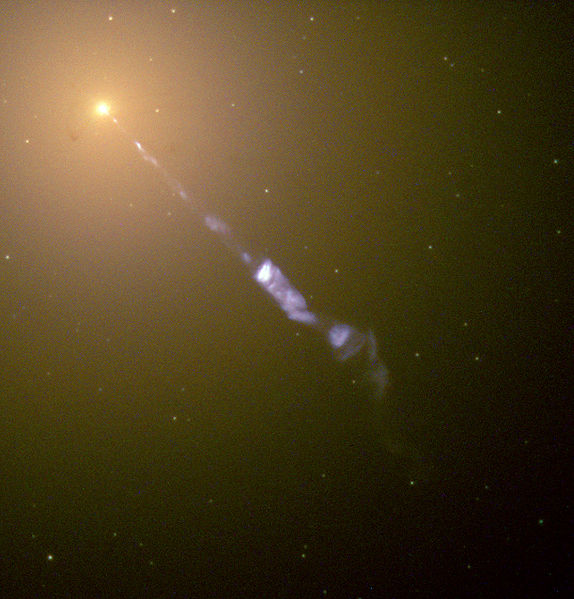
A cascade of powers of six-and-a-half billion
Let's give each person in the world a cat. You need a massive number of cats with a huge total weight. The total mass of cats needed equates to the mass of the largest concrete structure ever build: the Three Gorges Dam. This dam is big, but not just big. It's awesome. Imagine pouring a tonne of concrete every minute of the day, seven days a week, during a period of more than a century. That is Three Gorges.

Now build such a dam for every single living human being. That is a lot of concrete with a total mass equal to the mass of Vesta, the second most massive body in the asteroid belt of our planetary system. We are talking here about a massive piece of rock five-hundred-thirty kilometers across.

Repeat again. Every human receives an asteroid the size of Vesta, rendering a total mass equal to that of the giant fusion reactor that keeps us warm in our cold and dark universe: the sun. The sun seems so common from our distant perspective, a disk of the size of the moon albeit considerably brighter. Yet the size of the sun is beyond comprehension. Reduce the sun to the size of our earth, and it would occupy an area in the sky 12,000 times smaller than the sun we know.

But we aren't there yet. Repeat once more. Give each living person a sun. You now have a mass second to none. Spectacular gravitational forces pull all this mass inward. Even if you have anticipated this gravitational pull and carefully spread the billions of suns over a volume far beyond the solar system, hell will brake loose. Nature does not allow a concentrated mass of this size being causally connected to our universe. An event horizon will form beyond which the black hole hides and only the gravitional attraction remains. The formation of a black hole is inevitable.

You better hide till this gravitational armageddon is over. Whilst billions of suns, billions times billions Vestas, billions times billions times billions Three Gorges Dams, and billions times billions times billions times billions cats get swallowed, ultra high energy gamma rays and powerful relativistic jets emerge. The gamma rays spread over the entire universe, whilst the plasma jets penetrate thousands of light years into intergalactic space thereby forming one of the largest objects in the universe.
When the dust settles
It takes a while, but at some moment in time all the mass has been swallowed. Dust has settled (or rather has been swallowed) and you are left with a supermassive black hole of size equal to the black hole in galaxy M87. This is the largest known black hole occupying the center of a galaxy. A black hole larger in size than our entire planetary system. Following the gravitional apocalyps we just witnessed, this giant black hole is extremely quiet. An object of supreme peacefulness. It is black after all, and nothing is supposed to leave the black hole. However, some very faint glow will emerge.

As Hawking has thought us, black holes emit energy and slowly but steadily evaporate. Don't expect any bright light. Black holes typically emit low-energy radio waves with wavelengths comparable to the size of the black hole. Black holes are matter crushers that transform matter into radiation. However, the process can be painstakingly slow as the radiation power of black holes is inversely proportional to the square of their mass. The result is that our six-and-a-half billion suns shine with a mere total power of 0.000 000 000 000 000 000 000 000 000 000 000 000 000 000 000 002 Watt. It will take a while before all the mass in the black hole is consumed and emitted in the form of radiation. We are not too far off calling this a black hole: no known object is anywhere near in darkness to this supermassive black hole.
As we have seen, the size of the black hole we build is huge. When placed at sun's position, it covers the orbits of all planets. Light would take four-and-a-half days to circumvent this giant black hole. We have also seen that its mass is spectacular. So we have an enormous object with a spectacular mass. What is the ratio between these two large numbers? What is the mass divided by volume, or the density of this black hole? The answer might surprise you. This cosmic giant has a density of 0.5 mg/cm3, less than half the density of earth's atmosphere at sea level.
Holographic Flash Memory
Why are giant black holes so sparse? The standard answer used to be: Einstein's theory of gravity says so. But a more modern, and arguably more insightful, view is: when limited to any smaller region, nature wouldn't be able to handle the amount of data that needs to be tracked and memorized to transfer mass into radiation.
As we saw, black holes are matter crushers that translate matter in to radiation. But black holes do not do this in a random way. It is done in such a way that no information gets lost. When all the matter has been transferred into radiation, by measuring the state of each photon that has been emitted by the black hole, one can in principle calculate back the precise configuration of matter that entered the black hole. Each photon of radiation that leaves the black hole caries away some bits of information. The total number of photons that get emitted during the evaporation of the black hole is roughly equal to the number of Planck areas that fit onto the black hole horizon. This all hints towards a fundamental constraint on storage of information: in a given spherical region of space nature can store an amount of information that is proportional to the area of that sphere. This is the holographic principle, proposed 16 years ago by Gerard 't Hooft. It seems that the holographic principle sets a clear constraint to the yet-to-be-found theory of quantum gravity.
So, black holes are matter crushers, and their horizons are giant cosmic flash memories that capture and record the information contained in the infalling objects utilizing Planck scale discretization. Each bit of information that enters the black hole increases its horizon area by a few Planck areas, whilst each bit of information carried away by an evaporating photon makes the horizon shrink by an equal amount.

At the very heart of the holographic principle is the phenomenon of black hole complementarity proposed by Lenny Susskind. Whilst a free falling observer would fall through the horizon of a giant black hole without noticing anything unusual, a stationary observer hoovering outside the black hole observes all matter and the information therein being deposited at the black hole horizon and eventually being re-emitted as Hawking radiation. Black hole complementarity tells us that both descriptions represent equally valid and causally disconnected histories that can not lead to any inconsistencies.
Quantum physics is weird. And even more so when applied to black holes.



Comments